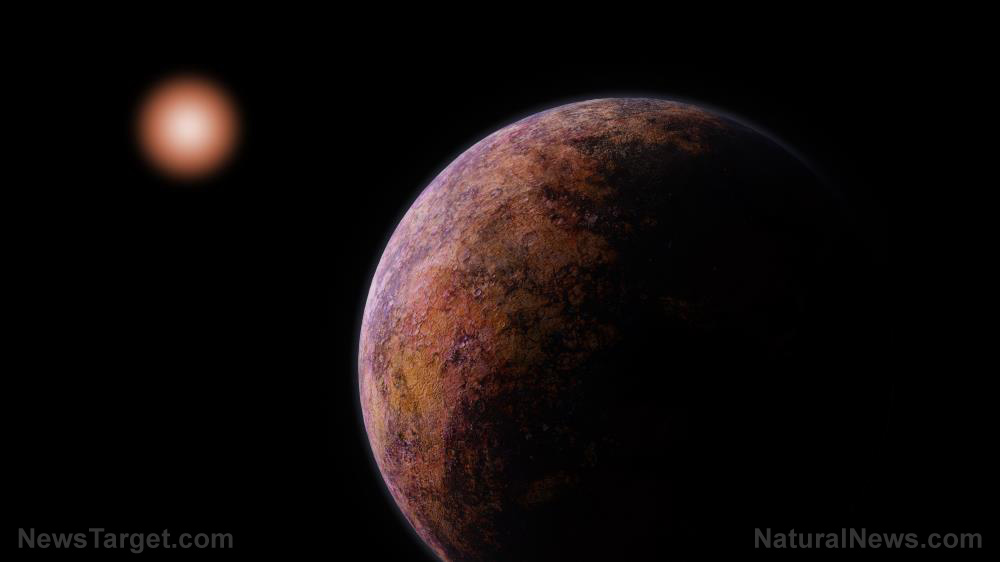
Brazilian researchers have new reason to believe that a nearby exoplanet fits the bill for supporting extraterrestrial life. Their study suggests that the planet Ross 128b is likely to be a rocky world with a temperate climate, an article in Space.com stated.
Discovered in 2017, the new exoplanet is 11 light-years away from our solar system. It is roughly around the same size as Earth, although the researchers do not think it is an identical twin to our planet.
Much about Ross 128b remains a mystery. For example, there is no data on the planet's geologic activity. There is no evidence that it experiences the volcanic activity required for the development of organic life.
However, new evidence from the Observatório Nacional (ON) research team suggested that the exoplanet possesses a temperate climate. Such a "tepid" climate would be conducive to the presence of liquid water and life. (Related: Beyond oxygen: Looking for possible alien life that may not require an atmosphere with oxygen.)
New planet is much closer to its star, but only slightly bigger than Earth
Since its discovery, Ross 128b has become one of the most popular targets for astrobiologists looking for alien life. It seems to be inside the "goldilocks zone" of its host star Ross 128, the range of distance where water is able to maintain its liquid form on a planet.
In the case of Ross 128b, this zone is closer to its parent star than most examples. The star called Ross 128 happens to be a red dwarf star that is smaller and dimmer than the Sun.
The small size of its parent star means Ross 128b must be much closer to Ross 128 than Earth is to the Sun. The exoplanet takes just 9.9 days to complete an orbit; for comparison, Earth takes 365 days on average while Mercury – the closest planet to the Sun – needs 90 days.
Researchers estimate that the minimum mass of the planet is around 1.35 times that of Earth. This mass falls within the range expected for rocky planets like Earth and Mars.
For their study, the ON researchers evaluated the star itself, Ross 128. They relied upon the Apache Point Observatory Galactic Evolution Experiment (APOGEE), an infrared spectroscope mounted on a telescope operated by the Sloan Digital Sky Survey project.
"The ability of APOGEE to measure near-infrared light, where Ross 128 is brightest, was key for this study," explained Johanna Teske of the Carnegie Institution for Science, who served as co-author of the study. "It allowed us to address some fundamental questions about Ross 128b's 'Earth-like-ness."
Study suggests Ross 128b is a rocky planet with equilibrium temperature
The data uncovered by the spectroscope showed that the star Ross 128 contained an abundant amount of carbon, iron, magnesium, and oxygen. These elements are also expected to be found in the planet Ross 128, which came from the same stellar cloud of raw materials that produced its parent star in the first place.
Combining these stellar abundances with the known minimum mass of Ross 128b allowed the ON researchers to make an estimate of the radius of the planet. They theorize that the radius of the exoplanet is less than 1.7 times that of Earth, the limit for rocky planets.
Furthermore, the iron-to-magnesium ratio of the star suggested that Ross 128b has a bigger core than the Earth's double-layer core, which is 2,155 miles (3,400 kilometers) wide.
Based on the surface temperature of the star and the planet's radius and orbital distance, the researchers calculated that the exoplanet has an equilibrium temperature of 70 degrees Fahrenheit (21 degrees C). This does not factor in the mysterious atmosphere of Ross 128b, however.
Visit Cosmic.news to get more articles on how Ross 128b and other exoplanets could potentially be habitable for alien life or even human colonists.
Sources include:
IOPScience.IOP.org [PDF]
Please contact us for more information.





















